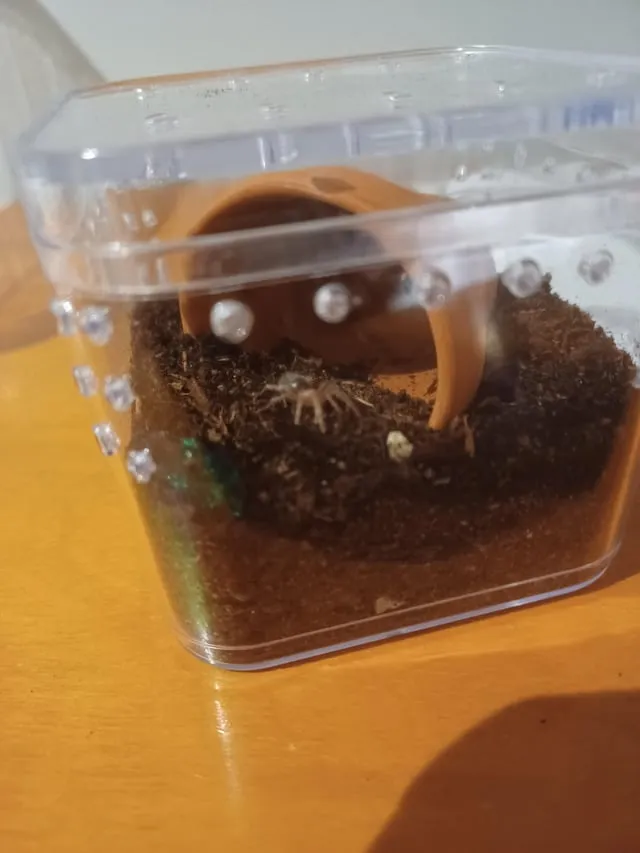Baby Tarantula: Top 7 Facts!
Baby tarantulas, often called spiderlings, are fascinating creatures that captivate the attention of both novice and experienced arachnid enthusiasts. These tiny spiders, the offspring of larger, often intimidating tarantulas, present a unique world of delicate care, remarkable growth, and intriguing behaviors. From their initial emergence from the egg sac to their early molting stages and eventual maturation, baby tarantulas offer a glimpse into the captivating life cycle of these eight-legged invertebrates. This guide reveals some top facts about baby tarantulas, covering their origins, dietary requirements, enclosure needs, growth process, and more.
What is a Baby Tarantula?
A baby tarantula, or spiderling, is a juvenile tarantula that has hatched from an egg sac. They are essentially miniature versions of adult tarantulas, although they have different care needs. Their small size, unique appearance, and specific requirements for care make them distinct from their adult counterparts. Understanding these differences is crucial for providing optimal care and ensuring the health and well-being of your baby tarantula. They go through several molting stages as they grow, shedding their exoskeleton to accommodate their increasing size. Their appearance and characteristics change as they progress from spiderlings to adults, which is a captivating process for any tarantula keeper.
Understanding the Terminology
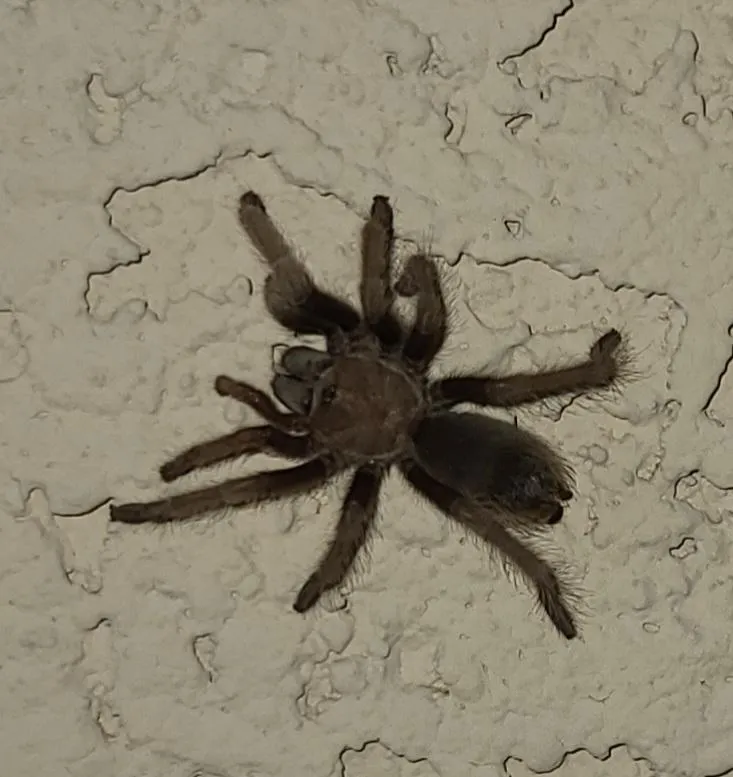
Before we dive into the specifics, it’s helpful to clarify some key terms. A ‘spiderling’ is the general term for a baby tarantula. ‘Molting’ is the process where a tarantula sheds its exoskeleton to grow. An ’exoskeleton’ is the hard outer covering that protects the spider. ‘Instar’ refers to the stage between molts. ‘Egg sac’ is the silken pouch that the female tarantula creates to protect her eggs. Understanding these terms is important for anyone caring for these creatures. This knowledge will help you identify their needs and respond appropriately to any issues that arise. Recognizing these terms ensures you can give them the best care.
Appearance and Size
Baby tarantulas are incredibly small, often measuring only a few millimeters in body length when they first emerge from the egg sac. Their coloration and patterns may differ slightly from those of adult tarantulas, although they often resemble miniature versions of their adult forms. The size of the baby tarantula depends on the species. Some species are naturally larger than others, leading to different sizes at the spiderling stage. Their appearance will change with each molt, with the colors and patterns becoming more pronounced as they mature. The distinct characteristics of each species make baby tarantulas a fascinating study in invertebrate biology. Observing their development is a rewarding experience.
Fact 1: Their Tiny Beginnings
The life of a baby tarantula starts within an egg sac, carefully created and guarded by the mother tarantula. These egg sacs can contain hundreds or even thousands of eggs, depending on the species. After a few weeks, the eggs hatch into tiny spiderlings, which often remain in the egg sac for a while longer before venturing out. This initial period is crucial for their development. The spiderlings are extremely vulnerable at this stage, making the mother’s protection vital. Many keepers find the process fascinating, and it’s a key factor in ensuring the spiderlings’ survival. The number of eggs and the incubation period vary among different tarantula species, highlighting their diverse biology.
Hatching from the Egg Sac
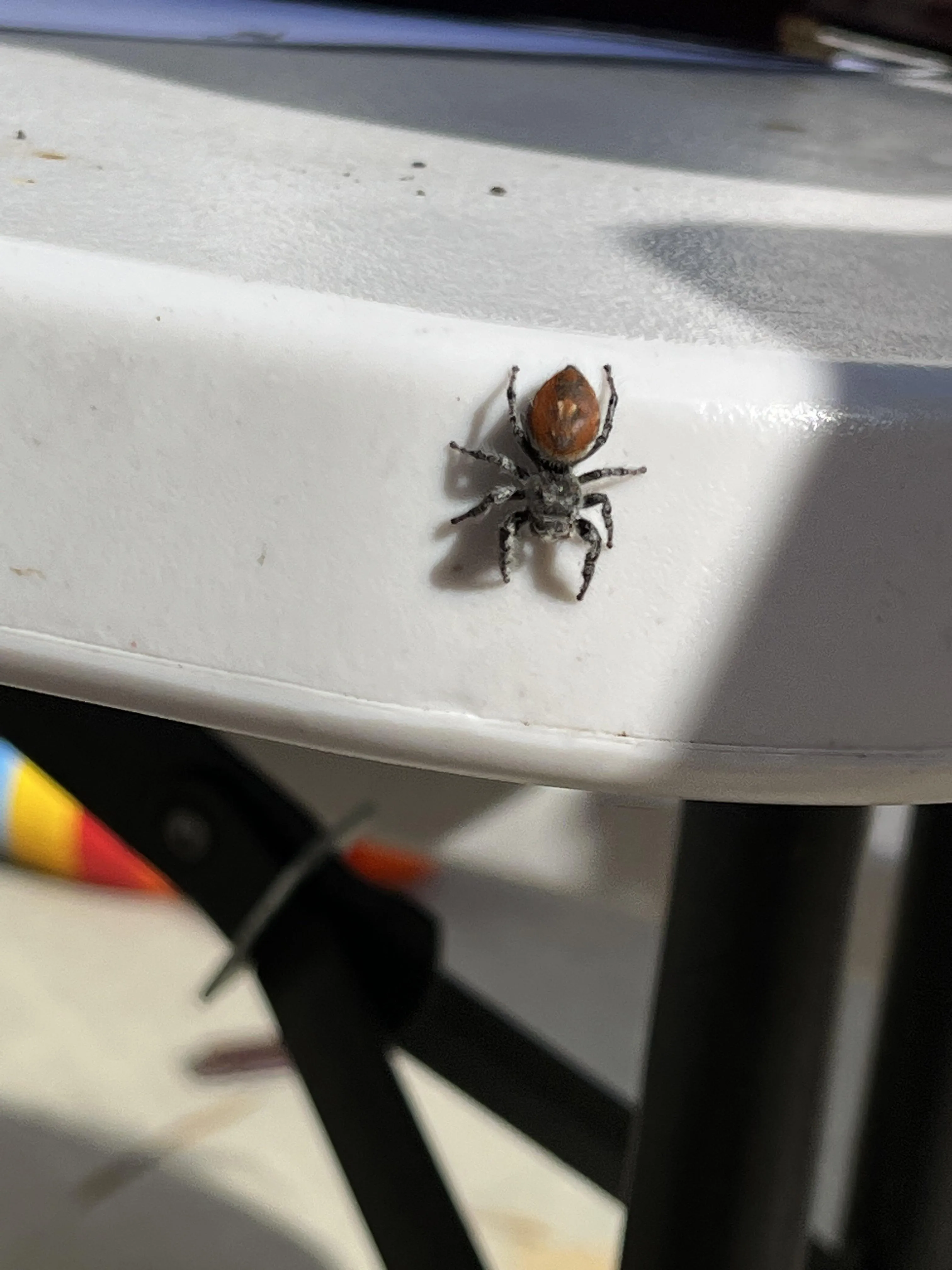
Hatching is a remarkable process. The spiderlings break free from their eggs, often within the protective confines of the egg sac. Initially, they are quite delicate and rely on the yolk sac for sustenance. The mother tarantula usually remains close to the egg sac, providing a degree of protection. Hatching typically occurs several weeks after the eggs are laid. The timing depends on factors such as temperature and humidity. Once they emerge, they must molt a few times before becoming truly independent. This initial phase is crucial for their survival and development. Keeping a close watch during hatching helps ensure the survival of these delicate creatures.
Early Molting Stages
Baby tarantulas must molt multiple times as they grow. Molting is the process of shedding their exoskeletons to allow for growth. The frequency of molting depends on the spiderling’s age, species, and environmental conditions. During molting, the spiderling is extremely vulnerable, as its new exoskeleton is soft. Proper environmental conditions, like maintaining appropriate humidity and temperature, are essential for a successful molt. The newly molted spiderling has a brighter appearance, and its size will noticeably increase. Molting is a sign of healthy growth and development. Watching these creatures transform through molting is an amazing process for any pet owner.
Fact 2: The Diet of a Baby Tarantula
Baby tarantulas have very specific dietary needs. Their small size means they can only consume small prey items. These often include flightless fruit flies, pinhead crickets, or freshly hatched mealworms. It’s important to offer appropriately sized food items that the spiderling can easily capture and consume. Feeding frequency is also critical. Baby tarantulas require more frequent meals than adult tarantulas because of their rapid growth. Their diet also affects their health and well-being. It’s important to ensure the food items are nutritious. Overfeeding can lead to health problems, so it’s important to feed them in moderation. Providing the right kind of food and in the right amount are important for their survival.
What They Eat
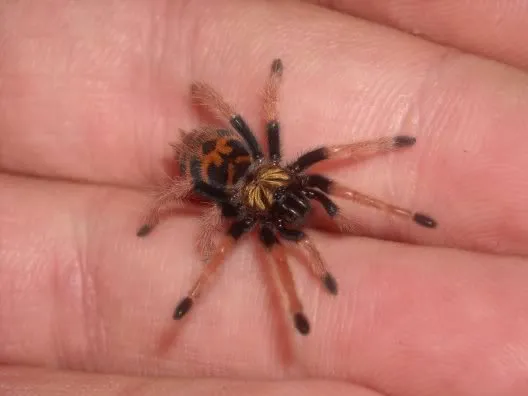
The diet of a baby tarantula typically consists of small invertebrates. Flightless fruit flies are a popular choice, as they are easy to obtain and provide essential nutrients. Pinhead crickets are another common option, offering a good source of protein. Freshly hatched mealworms can also be a part of their diet. It is important to vary the diet to ensure the baby tarantula receives a balanced intake of nutrients. The size of the prey should be appropriate for the spiderling’s size. It’s best to remove any uneaten prey after a day to prevent the risk of harm. This helps maintain a clean and healthy enclosure for the baby tarantula. A diverse diet will ensure the healthy growth of the spiderling.
Feeding Frequency
Baby tarantulas require more frequent feedings than adult tarantulas due to their rapid growth. A general guideline is to feed them every other day, or even daily, depending on the species and their growth rate. You can gauge the feeding frequency by observing the spiderling’s abdomen. A full abdomen indicates it has been eating well. It’s important not to overfeed, however. Overfeeding can lead to problems. Always ensure the spiderling has access to fresh water. Adjust the feeding schedule as the spiderling grows and molts. Monitor the spiderling’s overall health and adjust the feeding frequency accordingly. Providing proper feeding ensures the baby tarantula has enough energy to grow and molt successfully.
Fact 3: Their Delicate Needs
Baby tarantulas have very specific environmental needs, including temperature, humidity, and enclosure size. They are sensitive to fluctuations in these factors. Providing the right environment is critical for their health and survival. High humidity is usually required to ensure successful molting, but too much humidity can lead to harmful mold and bacteria growth. The enclosure must be appropriately sized to allow the spiderling to move and hunt effectively. Maintaining these conditions requires careful monitoring and adjustment. Always make sure to provide the right amount of ventilation. Taking care of their delicate needs means more successful spiderlings and healthy adult tarantulas.
Humidity and Temperature
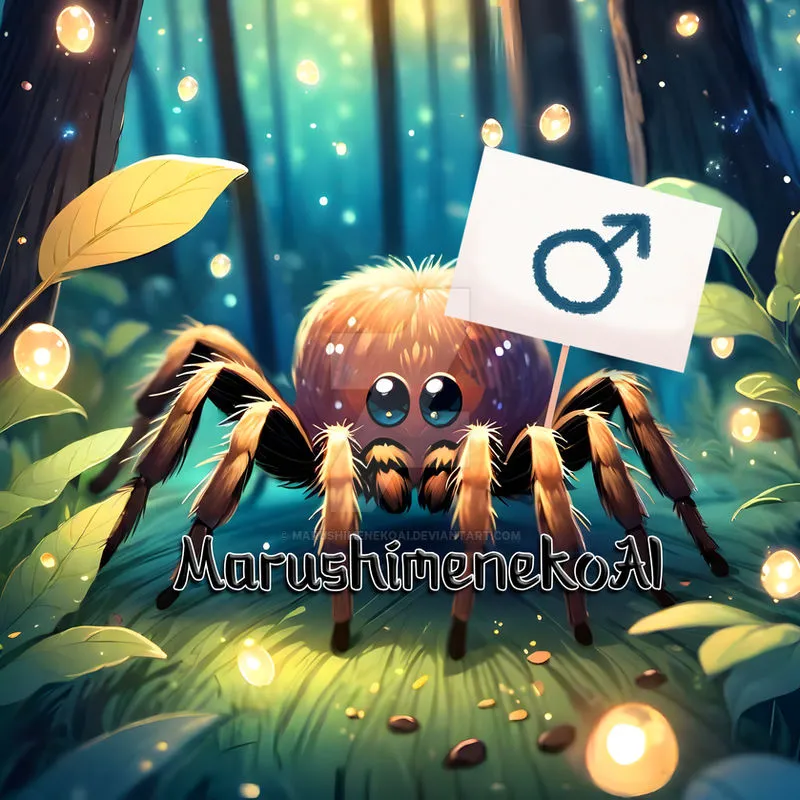
Maintaining the right humidity and temperature levels is crucial for the health of a baby tarantula. Most baby tarantulas thrive in a humidity range of 70-80%, which can be achieved by misting the enclosure regularly. Ensure proper ventilation to prevent mold growth. Temperature should be kept within a range of 75-80°F (24-27°C). Use a thermometer and hygrometer to monitor the conditions. Adjust the environmental factors as needed to provide an optimal environment. Incorrect humidity or temperature can cause stress and hinder growth. Regular monitoring will help you catch any problems before they affect the spiderling. Maintaining the correct environment is important for their well-being.
Appropriate Enclosure Size
The size of the enclosure for a baby tarantula should be appropriate for its size. A small, well-ventilated container is ideal for spiderlings. The enclosure should be escape-proof and have enough space for the spiderling to move around, hide, and hunt. Avoid providing too much space, as this can make it difficult for the spiderling to find its prey. As the tarantula grows, you will need to upgrade to a larger enclosure. The enclosure should have a substrate, like coconut fiber or peat moss, that helps maintain humidity. Provide a shallow water dish and a hide, such as a piece of cork bark. Make sure the enclosure is secure to prevent escapes. A suitable enclosure makes caring for baby tarantulas easier.
Fact 4: The Mystery of Molting
Molting is a critical part of a baby tarantula’s growth process. During molting, the spider sheds its exoskeleton, revealing a new, larger one underneath. Before molting, the spiderling usually stops eating and may become less active. The process is a vulnerable time for the spiderling, as its new exoskeleton is soft. The molting process can take several hours or even days. Once the molt is complete, the spiderling will appear brighter and larger. Providing a safe and humid environment is vital for a successful molt. Molting is a sign of healthy growth and development. The process demonstrates the spiderling’s resilience, showing how it can grow by shedding its outer shell. Watching them molt is fascinating!
The Molting Process
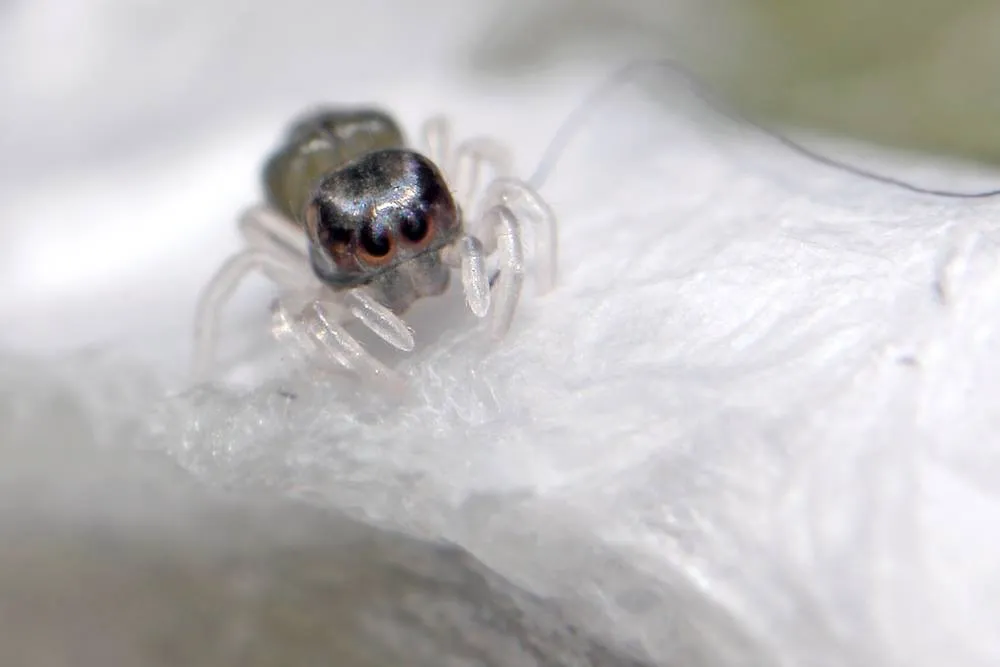
The molting process begins when the spiderling prepares to shed its exoskeleton. They usually start by creating a safe, quiet area in their enclosure. You will notice them becoming less active. The spiderling will then lie on its back, and the exoskeleton will split open. The spiderling then slowly extracts itself from the old exoskeleton. The entire process can take hours, and the spiderling is extremely vulnerable during this time. The new exoskeleton will be soft, so the spiderling will need time to harden. Avoid disturbing the spiderling during molting. Proper humidity is essential to help the spiderling successfully shed its exoskeleton. It’s a fascinating process to observe.
What to Do During Molting
During molting, it is critical to avoid disturbing the baby tarantula. Do not feed the spiderling until its new exoskeleton hardens, which can take several days. Maintain the appropriate humidity and temperature levels during this time. Avoid moving the enclosure or making any sudden noises. If the spiderling struggles to molt, it may be a sign of an environmental issue or health problem. Do not attempt to assist the spiderling, as this can cause injury. Keep a close eye on the spiderling. After molting, the spiderling will be more vulnerable for a short period. Allow it time to fully recover. Patience is important during this period. Correct conditions are important to prevent problems.
Fact 5: Growth and Development
Baby tarantulas grow through a series of molts. Each molt allows the spiderling to shed its old exoskeleton and grow into a larger one. The frequency of molting decreases as the tarantula gets older. The spiderling’s size will increase significantly with each molt. You’ll observe changes in color and patterns. The process is dynamic, and it reflects the tarantula’s progress. They start tiny and progress to more recognizable spider forms. The growth rate depends on several factors. Monitoring the growth and development of a baby tarantula can be a rewarding experience. Providing optimal conditions helps ensure healthy growth and development.
Stages of Growth
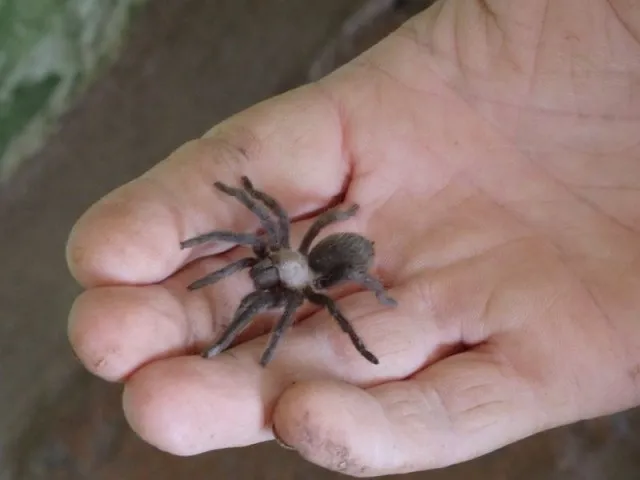
Baby tarantulas go through several stages of growth, marked by molts. The number of molts varies depending on the species and environmental factors. Each instar, the stage between molts, marks a period of growth. The spiderling increases in size and changes in appearance with each molt. The growth rate is generally faster in younger spiderlings and slows down as they mature. Observing the stages of growth provides valuable insights into the life cycle of a tarantula. As they grow, the baby tarantulas begin to look more and more like their adult forms. The time between molts can vary.
Factors Influencing Growth
Several factors influence the growth of a baby tarantula. Temperature and humidity play key roles. A consistent, appropriate environment is essential. Feeding frequency and diet also affect the growth rate. Provide the right foods. Genetics and the species of the tarantula also influence the growth rate. Some species grow faster than others. Proper care and consistent environmental conditions can help ensure healthy growth. Providing the right environment will make sure your spiderling thrives. By observing the conditions and making sure you are giving it the best care, you’ll be a great pet parent.
Fact 6: Common Baby Tarantula Species
There are many species of tarantulas, each with unique characteristics. Some species are more popular among hobbyists. The Brachypelma hamorii (Mexican redknee) is a popular choice due to its striking coloration and relatively docile temperament. Grammostola pulchra (Brazilian black) is another favorite, known for its all-black appearance and easy care. Other species, such as the Aphonopelma chalcodes (Arizona blonde) and Lasiodora parahybana (Brazilian salmon pink), are also common among collectors. Researching different species can help you decide which baby tarantula is best for you. The variety of tarantulas offers diverse options for the curious pet owner.
Popular Choices

Some baby tarantula species are particularly popular due to their appearance, temperament, and ease of care. The Mexican redknee is known for its striking orange and black markings, which become more vibrant with age. The Brazilian black is loved for its uniform, all-black coloration, and relatively calm nature. The Arizona blonde is a good choice for beginners. The Brazilian salmon pink is one of the largest tarantulas. Researching and understanding each species’ specific needs is important before getting a baby tarantula. Knowing what each species requires is key to being a good owner.
Their Characteristics
Each species has its unique characteristics. Some species are more docile, while others are more defensive. Some are terrestrial, while others are arboreal, living in trees. The sizes and colors can vary. The habitat and specific environmental needs of each species can also differ. Understanding these specific traits is important for providing the appropriate care. Consider their behavior and temperament when choosing a species. Researching the specific characteristics of each species allows you to be an informed pet owner. The diversity of species provides a range of options.
Fact 7: Handling and Safety
Handling a baby tarantula is generally not recommended. These spiders are small and fragile. Accidental drops can be fatal. Baby tarantulas are more likely to run or hide than to be aggressive. Always prioritize their safety. Observe the tarantula in its enclosure. Learn its behavior. Proper handling techniques are important for experienced tarantula keepers. When handling, always use a gentle approach. Handling baby tarantulas can be stressful for them. It is best to minimize handling. Prioritizing your baby tarantula’s well-being is very important for keeping it happy and healthy.
When to Handle
Generally, baby tarantulas should be handled as little as possible. Handling them can be stressful and risky. If you must handle the baby tarantula, do so only in a safe environment. Avoid handling them after a molt or when they are about to molt. Wash your hands before and after handling. Handle them over a soft surface to prevent injury if they fall. Never force the baby tarantula to be held. Always monitor their behavior. Handling can be appropriate for experienced keepers, but it is generally best to avoid it for baby tarantulas.
Safety Precautions
When handling baby tarantulas, always take safety precautions. Ensure that the enclosure is secure to prevent the baby tarantula from escaping. Avoid any sudden movements that could startle the spider. Be aware of the tarantula’s behaviors. Tarantulas have venom, although it is rarely dangerous to humans, but can cause discomfort. In case of a bite, wash the area with soap and water. If you experience any severe symptoms, seek medical attention. Always handle the baby tarantula with care. Respect the tarantula. Understanding the risks and taking precautions is essential for your safety. Always prioritize safety.
